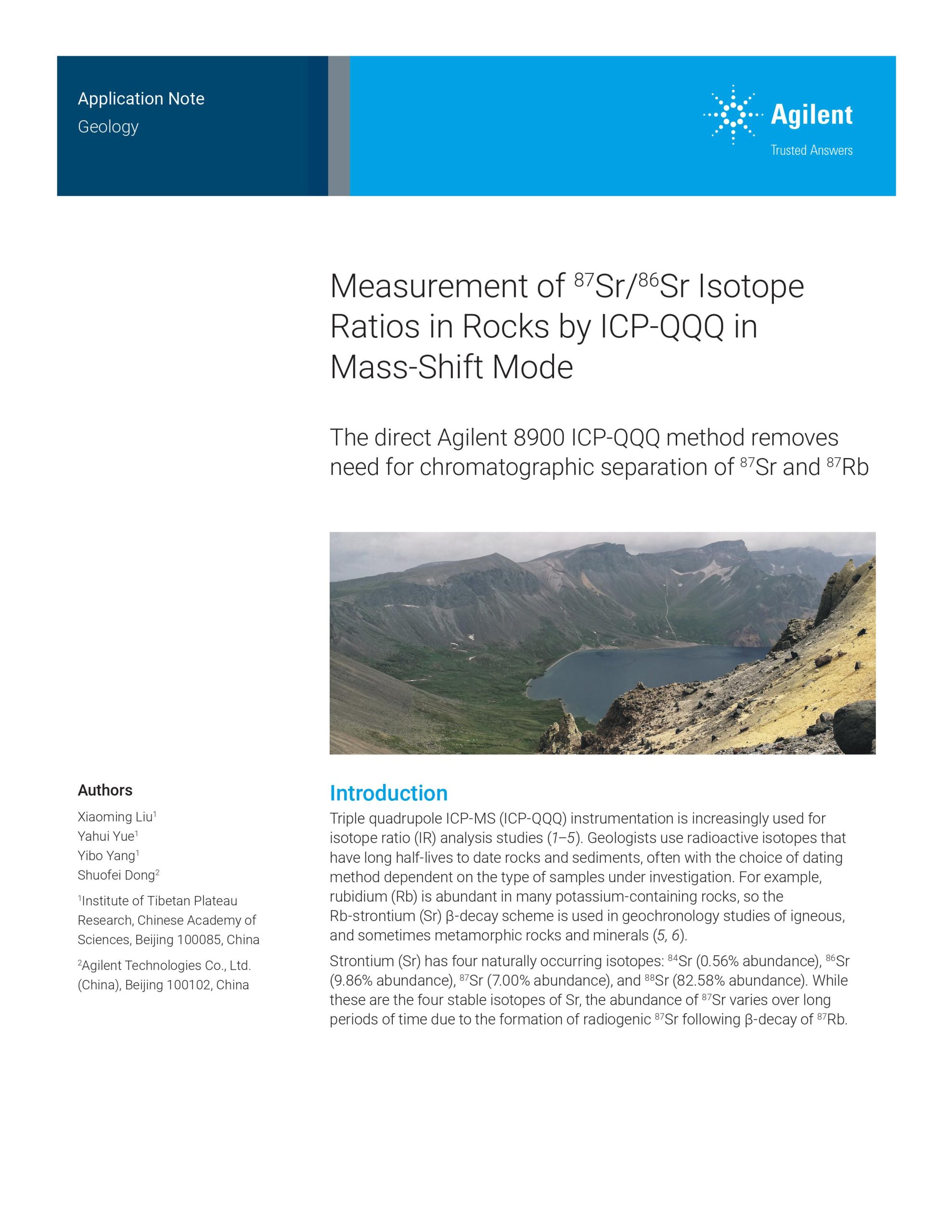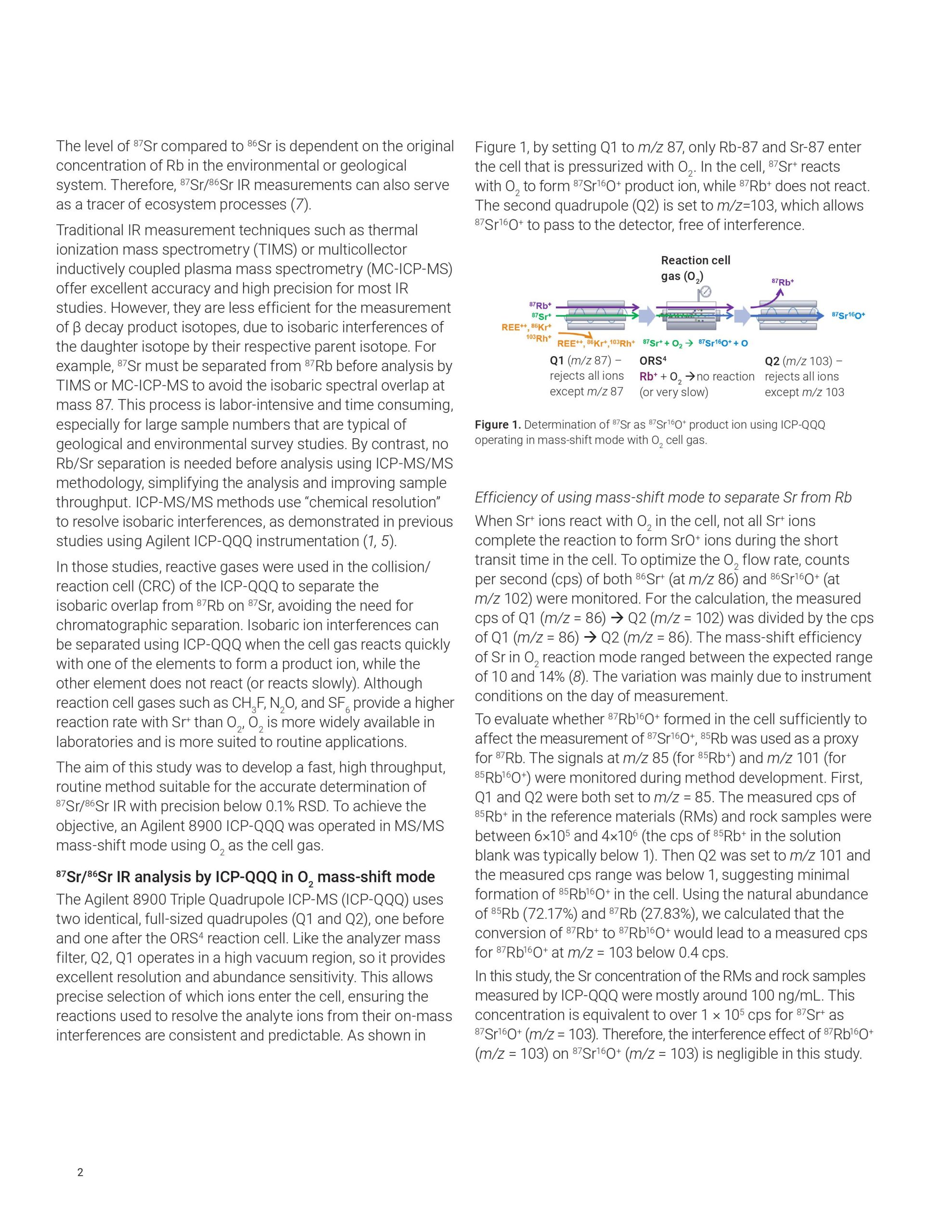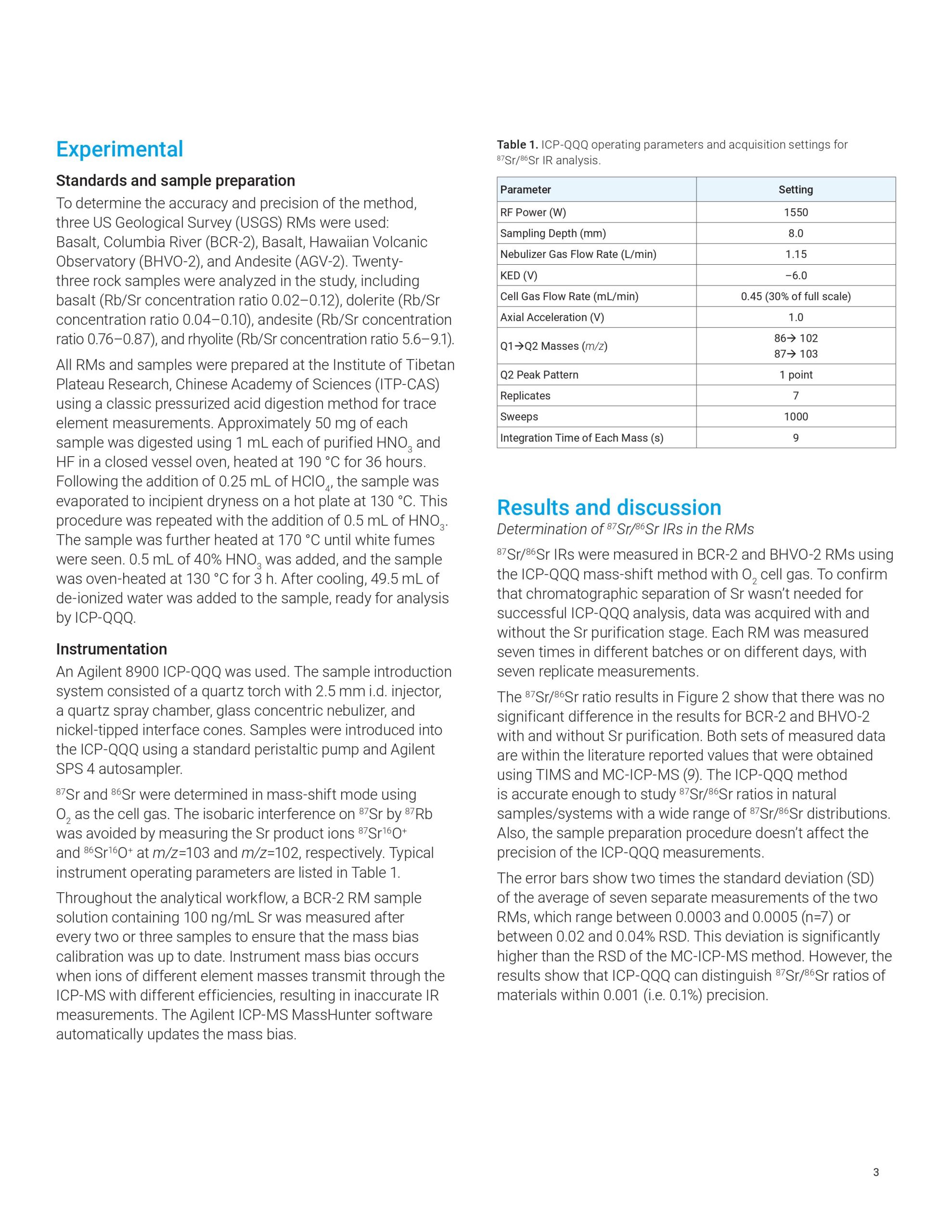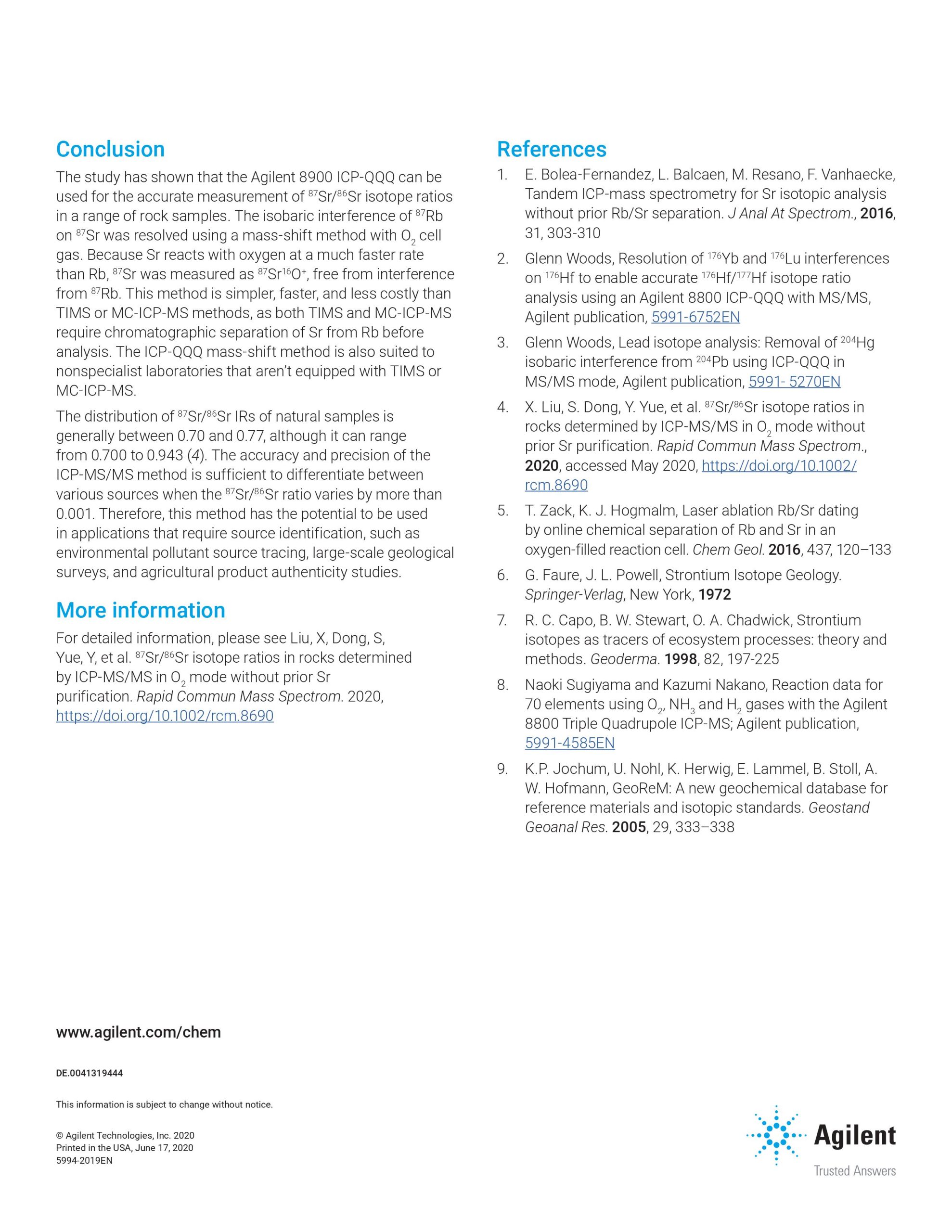Triple quadrupole ICP-MS (ICP-QQQ) instrumentation is increasingly used for isotope ratio (IR) analysis studies (1–5). Geologists use radioactive isotopes that have long half-lives to date rocks and sediments, often with the choice of dating method dependent on the type of samples under investigation. For example, rubidium (Rb) is abundant in many potassium-containing rocks, so the Rb-strontium (Sr) β-decay scheme is used in geochronology studies of igneous, and sometimes metamorphic rocks and minerals (5, 6). Strontium (Sr) has four naturally occurring isotopes: 84Sr (0.56% abundance), 86Sr (9.86% abundance), 87Sr (7.00% abundance), and 88Sr (82.58% abundance). While these are the four stable isotopes of Sr, the abundance of 87Sr varies over long periods of time due to the formation of radiogenic 87Sr following β-decay of 87Rb.







 Tiếng Việt
Tiếng Việt
